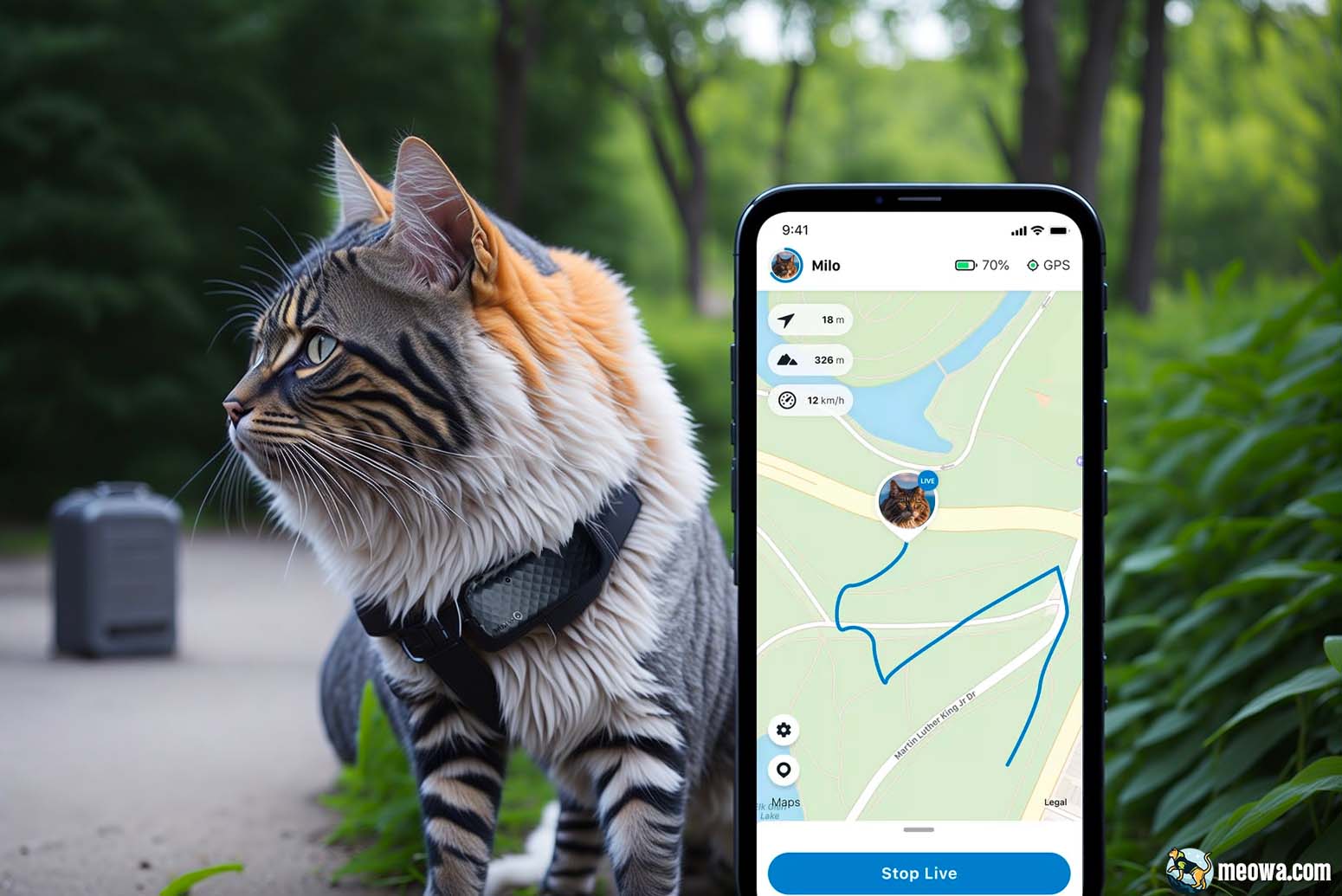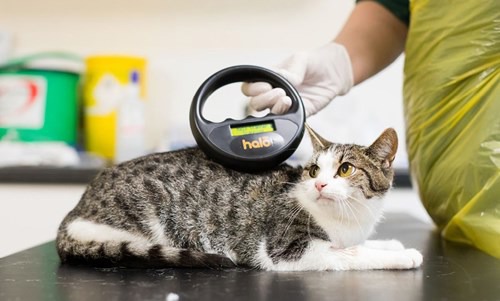Introduction: The Importance of Keeping Your Cat Safe

Keeping your cat safe is a top priority for any responsible pet owner. Cats are curious creatures that love to explore their surroundings, which can sometimes put them at risk of getting lost or injured. That's why it's crucial to take the necessary steps to ensure their safety.
One effective way to keep your cat safe is through microchipping. Microchipping provides a permanent identification method that cannot be easily lost or removed like traditional collars and tags. It offers peace of mind, knowing that if your cat ever goes missing, there is a way for them to be identified and returned safely.
In this blog post, we will delve into the power of a microchip and its benefits in keeping your cat safe. We will also discuss the procedure involved in microchipping, as well as important aftercare and maintenance tips. Additionally, we will touch upon other safety measures such as collars, tags, and GPS trackers that can complement the effectiveness of microchipping.
By taking these precautions and utilizing the power of a microchip, you can ensure the safety and well-being of your beloved feline friend.
Understanding Microchipping: What It Is and How It Works

Microchipping is a safe and efficient way to permanently identify your beloved cat. It involves inserting a tiny microchip, about the size of a grain of rice, under their skin using a needle. This microchip contains a unique identification number that can be scanned using a special device.
Once the chip is implanted, your cat's information, such as their name, your contact details, and any medical considerations, can be registered in a national pet database. This information is linked to the identification number on the microchip.
When a lost or stray cat is found, animal shelters, veterinary clinics, and even some individuals have the ability to scan for a microchip. If your cat has been microchipped and their chip is scanned, it will display their unique identification number. This allows the person scanning to access their registered information and contact you to reunite you with your feline friend.
Microchipping is painless for your cat and provides a permanent form of identification that cannot be easily lost or tampered with. It helps increase the chances of finding them if they ever go missing and gives you peace of mind knowing that they can be safely returned home.
The Benefits of Microchipping Your Cat

Microchipping your cat brings along a range of benefits that contribute to their overall safety and your peace of mind. Firstly, it serves as a permanent form of identification that cannot be easily lost or removed like collars and tags. This ensures that even if your cat goes missing, they can be easily identified and reunited with you.
Additionally, microchipping eliminates the risk of mistaken identity. Unlike traditional identification methods, such as collars and tags which can become worn or fall off, microchips remain securely in place.
Moreover, microchipping is a painless procedure for your cat. The implantation process is quick and relatively comfortable, allowing your feline friend to experience minimal discomfort.
Lastly, microchipping provides long-term protection for your cat's health. In emergency situations where your cat may require medical attention, having their microchip readily scanned can assist veterinarians in accessing critical information about their medical history or any allergies they may have.
Overall, the benefits of microchipping are invaluable - ensuring the safe return of your beloved pet in case they ever go missing.
Preparing for Microchipping: What You Need to Know

Preparing for microchipping your cat is an important step to ensure a smooth and successful procedure. Before scheduling an appointment with your veterinarian, there are a few things you need to know.
Firstly, it's crucial to confirm that your contact information is up to date. This includes your current address, phone number, and email address. In case your cat gets lost and someone finds them, having the correct contact information on file will facilitate their safe return.
Secondly, research registered microchip companies in your area and choose one that is reputable and recognized by veterinary professionals. Make sure the chosen microchip meets international standards to ensure compatibility with scanners worldwide.
When preparing for the actual day of the procedure, bring along any paperwork required by the microchip company or your veterinarian. This may include proof of ownership or identification documents.
By taking these steps, you can be well-prepared for the microchipping process and increase the likelihood of a positive outcome for both you and your beloved feline companion.
Microchipping Procedure: What to Expect

During the microchipping procedure, you can expect your cat to be handled gently and with care by a trained professional. The process is quick and relatively painless, similar to getting a routine vaccination.
First, the veterinarian will locate an appropriate spot for the microchip, usually between the shoulder blades or on the back of the neck. They will clean the area with an antiseptic solution to minimize the risk of infection.
Next, using a sterile needle, the veterinarian will insert the microchip under your cat's skin. Your cat may feel a slight pinch or discomfort during this moment, but it should be brief.
Once the microchip is inserted, the veterinarian will scan it to ensure it is working properly. This is important for immediate verification of successful implantation.
Afterward, you will receive updated registration information for the microchip company and instructions on how to update them with your contact details.
Overall, the microchipping procedure is a straightforward and effective way to protect your cat and increase the chances of being reunited if they ever go missing.
Aftercare and Maintenance: Ensuring the Effectiveness of the Microchip

After the microchipping procedure, it is essential to ensure the effectiveness of the microchip by providing proper aftercare and maintenance. Keep the area where the microchip was inserted clean and dry for a few days following the procedure. Avoid touching or rubbing the area, as this can cause irritation or infection.
It is also important to regularly update your contact information with the microchip company. If you move or change phone numbers, make sure to notify them so that they have your current details on file. This will significantly increase the chances of being reunited with your cat if they ever go missing.
Additionally, it is recommended to have your cat's microchip scanned annually during their routine veterinary check-ups. This will help ensure that the microchip is still functioning correctly and that it hasn't migrated from its original location.
By taking these simple steps of aftercare and maintenance, you can ensure that your cat's microchip remains effective in identifying them and aiding in their safe return if they become lost.
Additional Considerations: Collars, Tags, and GPS Trackers

When it comes to keeping your cat safe, microchipping is a great solution. However, there are additional considerations that can further enhance their safety. One option is using collars and tags. Collars with identification tags provide a visible form of identification for your cat and can include your contact information. This can be helpful if your cat is found by someone who may not have access to a microchip scanner.
In addition to collars and tags, GPS trackers are becoming increasingly popular. These devices attach to your cat's collar and allow you to track their location in real-time through a mobile app or website. GPS trackers give you peace of mind knowing you can easily locate your cat if they wander away or get lost.
While these additional measures can complement the effectiveness of microchipping, it's important to remember that collars and tags can be lost or removed, and GPS trackers require regular charging. Therefore, microchipping remains the most reliable form of identification for your cat in case they become separated from you.
Final Thoughts: Peace of Mind with a Microchipped Cat

Microchipping your cat is a simple yet effective way to ensure their safety and give you peace of mind. With a microchip, even if your cat gets lost or accidentally wanders away, there's a higher chance of them being quickly identified and returned to you. This tiny device, about the size of a grain of rice, contains unique identification information that can be scanned by veterinarians, shelters, and rescue organizations.
Having your cat microchipped means you won't have to rely solely on physical collars or tags that can be easily lost or removed. Unlike traditional forms of identification, such as ID tags, microchips are permanent and cannot be altered or tampered with.
Microchipping your cat provides an extra layer of protection for your feline friend. It gives you peace of mind knowing that even if they wander off and become lost, there's a greater chance of them being safely reunited with you. So take the proactive step to safeguard your cat's well-being with this reliable form of identification.




0 Comments